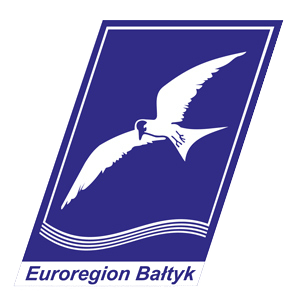Informacje z Euroregionu Bałtyk

Streets for the Youthtl-ne News Projects Streets for the Youth English pll_667e866fa98a2 Streets for the Youth
Streets for the Youth project
Below are the design assumptions of "Streets for the Youth":
Project under the ERASMUS+ program, no. KA220-YOU-C70942A0 (2024-1-FR02-KA220-YOU-000245435)
Implementation period: 30 months Implementation time: 03.11.2024 to 02.05.2027 Value: 120,000.00 EUR
Project area: Placemaking in practice; the process of planning spaces with public participation, urban space development together and for the needs of the youth
Main themes: youth in the city, city transformation, city of tomorrow, public spaces for youth, environmental, social and economic changes and transformation, youth participation in local life and spatial planning.
Partnership: 4 partners
- Project Leader: Saint-Brieuc ArmorAgglomération, Local Authorities in France
- Association of Polish Municipalities Euroregion Baltic (Poland)
- Hogeschool West-Vlaanderen Howest (Belgium)
- Comunidade Intermunicipal do Cávado (Portugal)
- Polish partners: STG ERB as the partner responsible for activities carried out by the municipalities of Gdynia, Dzierzgoń, and Elbląg
Short description: The "Streets for the Youth" project will engage young people aged 15-20 from 4 EU countries (Portugal, France, Belgium, and Poland) in building the city of the future - a city that is flexible, friendly, and resilient, and meets the diverse needs of its users. The project will create connections between young people, urban planning specialists, and local councilors (i.e., those who create the city) so that together they can develop and test consultation techniques for public space development projects.
Context: The cities of tomorrow will not be like those of yesterday. Both small and large cities must change as they face significant transformations: ecological, demographic, mental, and digital. To adapt cities to the world of tomorrow, it is essential to engage their residents, especially young people, as they are the residents of the future. Thus, addressing the placement of young people in public spaces is like "opening a window" to see where young people are, how they move around the city or countryside, and how they use it. To do this, we must consider the diversity of young people (both those who commute and those who stay in one place, as well as places intended for girls, etc.), design spaces that concern them as a whole, not just for recreational purposes, and finally ask the youth for input by recognizing their knowledge about usage (recognizing their knowledge of the city) and by listening to and considering their expectations for the future. Young people can help us respond to transformation challenges and prepare our cities for the world of tomorrow.
Project objectives: Exchange, develop, and test techniques for engaging young people in thinking about the future of their city and its planning:
- How do young people approach the topic of public space? What are their expectations, needs, and ideas?
- How can social planners ensure they have a place in their projects for changing and improving public spaces (public squares, parks, gardens) and consider environmental and social transformation issues? How can development meet young people's expectations, ensure social bonds, and common prosperity?
The project aims to encourage the cooperation of three groups:
- YOUNG PEOPLE to participate in democratic life and think about living together by expressing their vision of the city today and tomorrow (usage, needs, challenges to be addressed).
- SELECTED REPRESENTATIVES, decision-makers, and local government employees to include public space users, especially young people, in the process of creating or remodeling public spaces.
- YOUTH PROFESSIONALS to adopt new techniques for motivating and engaging young people to participate in community life.
Over the 30-month duration of the project, partners hope to contribute to ADAPTING their cities to tomorrow's challenges by MOBILIZING young people, selected representatives, and specialists to address the transformations we must jointly prepare for in cities and rural areas. The project aims to mobilize and empower stakeholders in these matters to give young people a voice in decision-making processes regarding the construction and planning of public spaces, and to enable selected representatives and urban planning specialists to develop their skills in engaging society in public policy. The need to find appropriate means and methods of engaging young people is very high. The aim of this project is to identify, develop, and test youth-friendly and accessible mechanisms and structures that will allow them to actively engage in creating quality public spaces.
Project content: Exchange of practices, joint development of tools for engaging young people and testing in partner areas, connecting selected officials and planning specialists, youth professionals and young Europeans, creating recommendations for communities to facilitate the engagement of young people in public space development projects and strategies.
Target audience: The project is aimed at young people aged 15 to 20 . It is proposed to create an exchange between professionals and young people.

Funded by the European Union
Funded by the European UnionThe European Commission support for the production of this publication does not constitute an endorsement of the contents which reflect the views only of the authors; the Commission cannot be held responsible for any use which may be made of the information contained therein.
